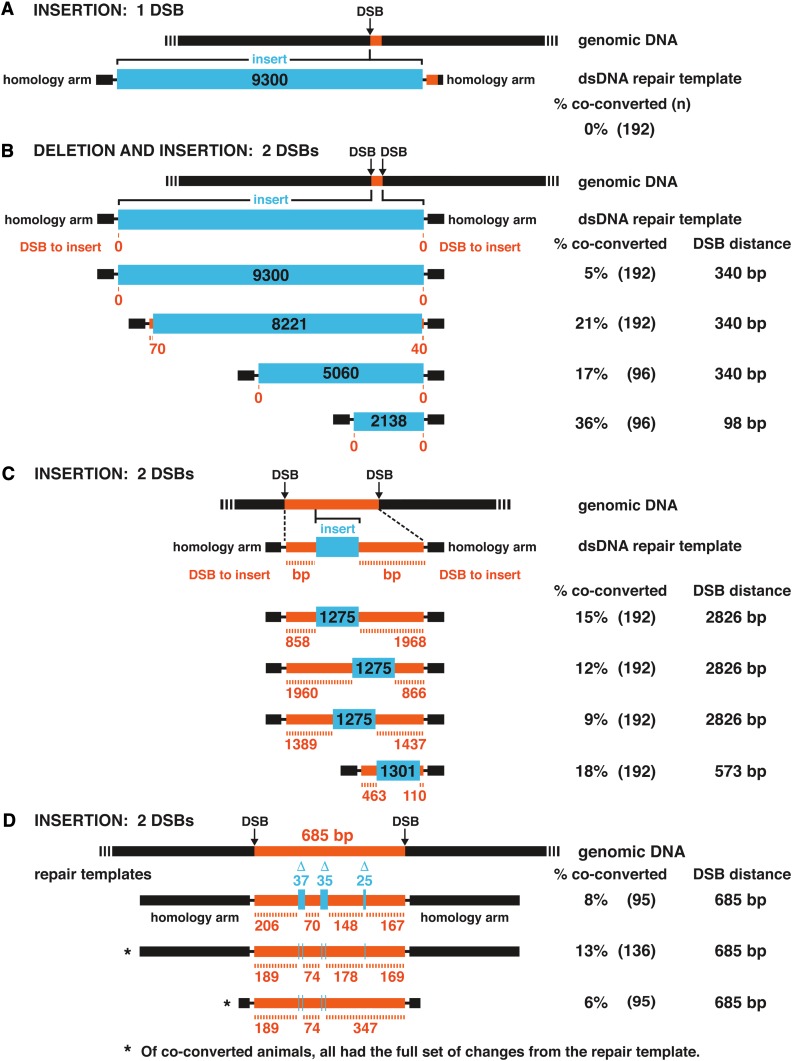Figure 5.
Two neighboring DSBs promote insertion of large DNA fragments. (A) Insertion of a 9300 bp reporter transgene was not successful in experiments involving a single Cas9 DSB and a double-stranded repair template with 500 bp homology arms (black and orange/black) flanking the DSB. See also results in Figure S2. (B) Insertion of long DNA fragments (blue) was efficient in dpy-10 co-conversion experiments when two neighboring DSBs were made using two different guide RNAs. In this experimental design, the DNA between the DSBs (340 or 98 bp) was deleted when the large DNA fragment was inserted. Double-stranded repair templates with 500 bp homology arms (black) were injected as plasmid DNA along with the Cas9 RNPs. For insertion of the 8221 bp reporter, the repair template included the standard 500 bp homology arms and additional 70 or 40 bp regions of homology to the DNA between the DSBs, making the total length of deleted DNA 230 not 340 bp. For all experiments in this figure, the term “DSB to insert” refers to the distance between the DSB and the novel DNA to be inserted. PAM orientation was IN/IN for the top three examples and IN/OUT for the bottom example (see Figure 6 legend for the orientation key). (C) Insertion of long DNA fragments at wide-ranging distances from both DSBs was accomplished by a variation in the double-stranded repair template. The template included all the DNA between the DSBs (orange) and positioned the new DNA to be inserted (blue) at different locations within the DNA spanning the DSBs. In this design, no DNA was deleted at the endogenous locus; only new DNA sequences were inserted. DSB locations for the last example differed from those in the other three examples. PAM orientation was OUT/OUT for the top three examples and OUT/IN for the bottom example. (D) Using a similar design of double-stranded repair template as in C, genome editing was accomplished at multiple sites in a large region of genomic DNA. In the top example, small deletions (blue) were introduced along the DNA, while in the bottom example, 3 bp substitutions (blue) were inserted at five different locations. PAM orientation was IN/IN for the three examples. For A–D, the number of animals with the diagrammed insertion was expressed as the percentage of total dpy-10 Rol or Dpy mutants given in parenthesis. Homology arms for all repair templates were 500 bp, except for the bottom example in D, which had 50 bp homology arms. All repair templates for A except the 3128 bp template were injected as purified plasmid DNA along with the Cas9 RNPs. Repair templates in C and D were linear dsDNAs. All diagrams were drawn to scale.

